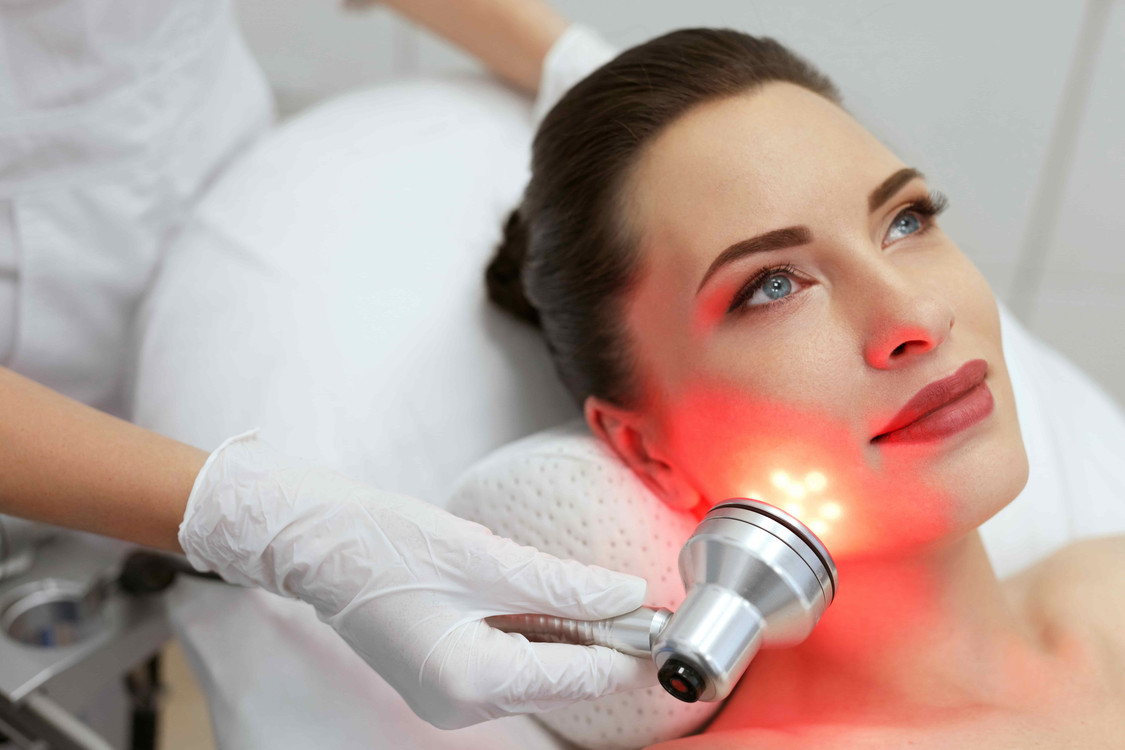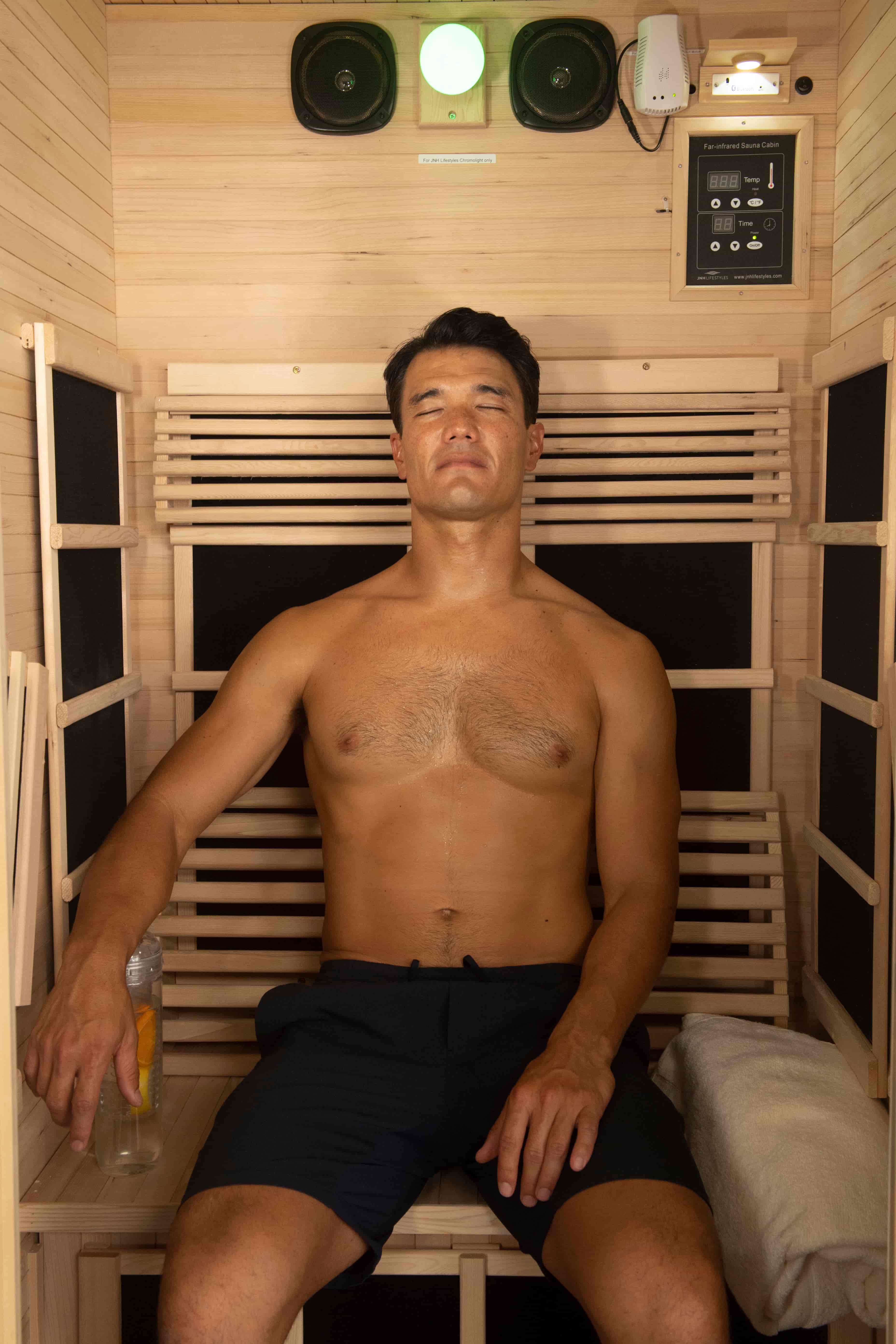Updated May 2022 Every day, more people become interested in ways to improve their health. Healthy eating and exercising have become mainstream practices, as people wish to live longer and better quality lives. As a result, it’s not a surprise that there has been a rise in different practices that promote wellness and can even help with a wide array of conditions and health issues. There are so many options to choose from: cupping, acupuncture, red light therapy, magnetic field therapy, the list goes on. With so many choices, it can be challenging to choose, especially when it’s hard to know the differences. One good comparison would be red light therapy vs infrared saunas. If you want to understand what makes them different, the best way to start is to figure out what they have in common.
The Electromagnetic Spectrum

Both red light therapy and infrared saunas are forms of light therapy. Light therapy is a very diverse field, with many different applications, the most common ones being the treatment of neonatal jaundice [1] and seasonal depression [2]. However, the effects of a certain type of light depend on where it falls in the electromagnetic spectrum. This means that different wavelengths are used for certain conditions.
Blue light, with wavelengths of 400-495 nanometers (nm), has shown great results in treating acne [3]. Green light, with wavelengths of 520-560 nm, may reduce pain in patients with chronic pain due to conditions like migraines and fibromyalgia [4]. When it comes to red light therapy and infrared saunas, they use different types of electromagnetic radiation. Red light therapy involves wavelengths between 630 nm and 700 nm, which are still in the visible spectrum (colored light). On the other hand, infrared light sits just outside of the visible spectrum, with wavelengths of 800 nm to 1 nm, and this has specific therapeutic implications [5].
What are Infrared Saunas?
For decades, traditional saunas have been a part of many people's routines. This practice has many benefits but has a downside. The purpose of a traditional sauna is to make you sweat by increasing the temperature around you. Normally, these rooms are heated to reach temperatures of 90°F at floor level and 185°F near the ceiling, which can be unbearable for some people [6]. Thankfully, advances in technology have allowed the invention of a new type of sauna with a different heating mechanism: the infrared sauna.
These new saunas use infrared light to heat your body, without the need of using the air as a heating medium. This is possible because this type of radiation transfers energy underneath the skin without stimulation or excessive heating [7], making it a great option for people who can't stand the heat of regular saunas.
Health Benefits of Infrared Saunas
Infrared saunas have countless health benefits. They can help regulate your circadian rhythm by improving the quality of your sleep. Also, if you’re experiencing stress, a session in an infrared sauna can help you relax. Other aspects that infrared saunas can help with are weight loss, circulation problems, sore muscles and detoxification [8]. There have been reports that this technology can improve the healing of skin wounds, relieve pain, stiffness, and fatigue. They can also help in the treatment of congestive heart failure, rheumatoid arthritis, and ankylosing spondylitis. Lastly, they have been used to treat ophthalmic, neurological and psychiatric disorders [9].
What is Red Light Therapy?
Unlike infrared saunas, this type of therapy involves visible light. Since this type of radiation has a shorter wavelength, it doesn't perform in the same way as infrared. The main difference is that it doesn't transfer heat to your body. The effects of red light therapy (also known as low-level laser therapy or LLLT) are attributed to the stimulation of mitochondria (the powerhouse of cells). It is hypothesized that the absorption of this type of energy enhances enzyme activity and electron transfer; as a result, there’s an increase in ATP production, which is how cells store energy. It’s also associated with the activation of signaling pathways in the cell that are involved with cell proliferation, survival, tissue repair and regeneration [10].
Health Benefits of Red Light Therapy
Red light therapy also has many health benefits. Most of these have to do with tissue regeneration. For example, studies have reported an increase in the proliferation of endothelial cells, which are vital in wound healing after exposure to LLLT [11]. Other studies have revealed that red light therapy accelerates the rate of re-epithelialization and cell proliferation on dermal abrasions [12]. These effects have also shown some promise in the anti-aging field, with studies reporting improved skin complexion and collagen density after treatment with LLLT [13]
There are other conditions where red light therapy has shown some promise. This is the case of dementia, temporomandibular joint pain dysfunction syndrome (TMJ), androgenetic alopecia (hair loss), osteoarthritis, and tendinitis.
Both red light therapy (LLLT) and infrared saunas are amazing forms of treatment you can implement yourself. There are plenty of at-home solutions for red light therapy and infrared saunas, it’s just a matter of choosing whether you want one or the other, or both! If you have any questions regarding the topic of this blog, please feel free to contact us via social media, our website chat or call our team of infrared sauna specialists at (800) 528-3110.
Sources:
[1] Vreman H, Wong R, Stevenson D. Phototherapy: Current methods and future directions. Seminars in Perinatology. 2004;28(5):326-333. https://www.ncbi.nlm.nih.gov/pubmed/15686263
[2] Light therapy - Mayo Clinic [Internet]. Mayoclinic.org. 2020 [cited 14 February 2020]. Available from: https://www.mayoclinic.org/tests-procedures/light-therapy/about/pac-20384604
[3] Terrell S, Aires D, Schweiger E. Treatment of acne vulgaris using blue light photodynamic therapy in an African-American patient. J Drugs Dermatol. 2009;8(7):669-71. https://www.ncbi.nlm.nih.gov/pubmed/19588644
[4] Oakes K. Green light therapy: A stop sign for pain? [Internet]. Mdedge.com. 2020 [cited 14 February 2020]. Available from: https://www.mdedge.com/neurology/article/200743/pain/green-light-therapy-stop-sign-pain
[5] SaunaBar [Internet]. Saunabar.com. 2020 [cited 14 February 2020]. Available from: https://www.saunabar.com/blog/infrared-vs-red-light-therapy-whats-the-difference
[6] Publishing H. Sauna Health Benefits: Are saunas healthy or harmful? - Harvard Health [Internet]. Harvard Health. 2020 [cited 14 February 2020]. Available from: https://www.health.harvard.edu/staying-healthy/saunas-and-your-health
[7] Shui S, Wang X, Chiang J, Zheng L. Far-infrared therapy for cardiovascular, autoimmune, and other chronic health problems: A systematic review. Experimental Biology and Medicine. 2015;240(10):1257-1265. https://www.ncbi.nlm.nih.gov/pmc/articles/PMC4935255/pdf/10.1177_1535370215573391.pdf
[8] Infrared Sauna Benefits: 9 Reasons Saunas Are Good for Your Health [Internet]. Healthline. 2020 [cited 14 February 2020]. Available from: https://www.healthline.com/health/infrared-sauna-benefits#2
[9] Tsai S, Hamblin M. Biological effects and medical applications of infrared radiation. Journal of Photochemistry and Photobiology B: Biology. 2017;170:197-207. https://www.ncbi.nlm.nih.gov/pubmed/28441605
[10] Avci P, Gupta A, Sadasivam M, Vecchio D, Pam Z, Pam N et al. Low-level laser (light) therapy (LLLT) in skin: stimulating, healing, restoring. Semin Cutan Med Surg. 2013;32(1):41-52. https://www.ncbi.nlm.nih.gov/pmc/articles/PMC4126803/pdf/nihms430657.pdf
[11] Rohringer S, Holnthoner W, Chaudary S, Slezak P, Priglinger E, Strassl M et al. The impact of wavelengths of LED light-therapy on endothelial cells. Scientific Reports. 2017;7(1). https://www.nature.com/articles/s41598-017-11061-y
[12] Gupta A, Dai T, Hamblin M. Effect of red and near-infrared wavelengths on low-level laser (light) therapy-induced healing of partial-thickness dermal abrasion in mice. Lasers in Medical Science. 2013;29(1):257-265. https://www.ncbi.nlm.nih.gov/pubmed/23619627
[13] Wunsch A, Matuschka K. A Controlled Trial to Determine the Efficacy of Red and Near-Infrared Light Treatment in Patient Satisfaction, Reduction of Fine Lines, Wrinkles, Skin Roughness, and Intradermal Collagen Density Increase. Photomedicine and Laser Surgery. 2014;32(2):93-100. https://www.ncbi.nlm.nih.gov/pmc/articles/PMC3926176/pdf/pho.2013.3616.pdf
[14] What Is Red Light Therapy? [Internet]. WebMD. 2020 [cited 14 February 2020]. Available from: https://www.webmd.com/skin-problems-and-treatments/red-light-therapy#2



